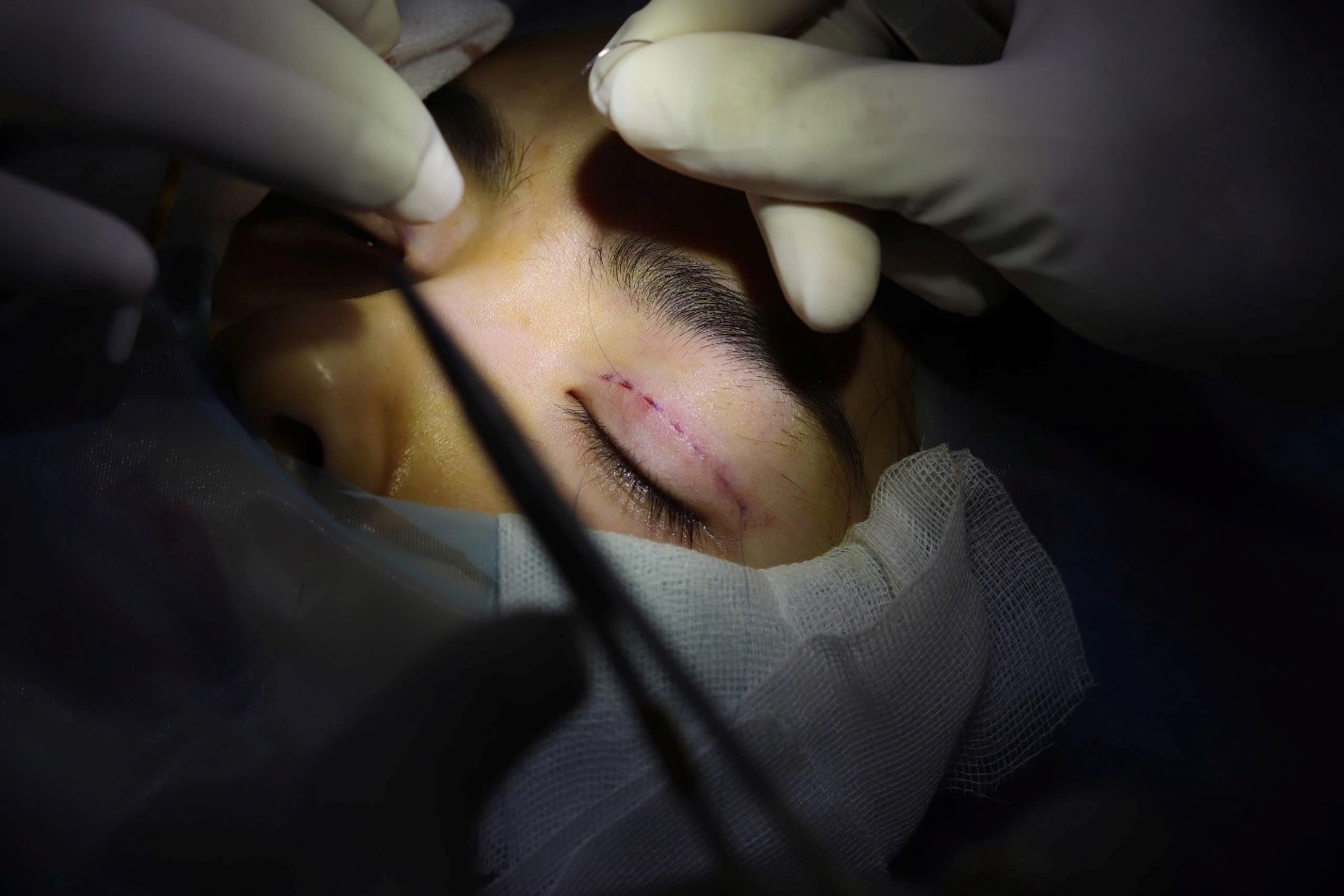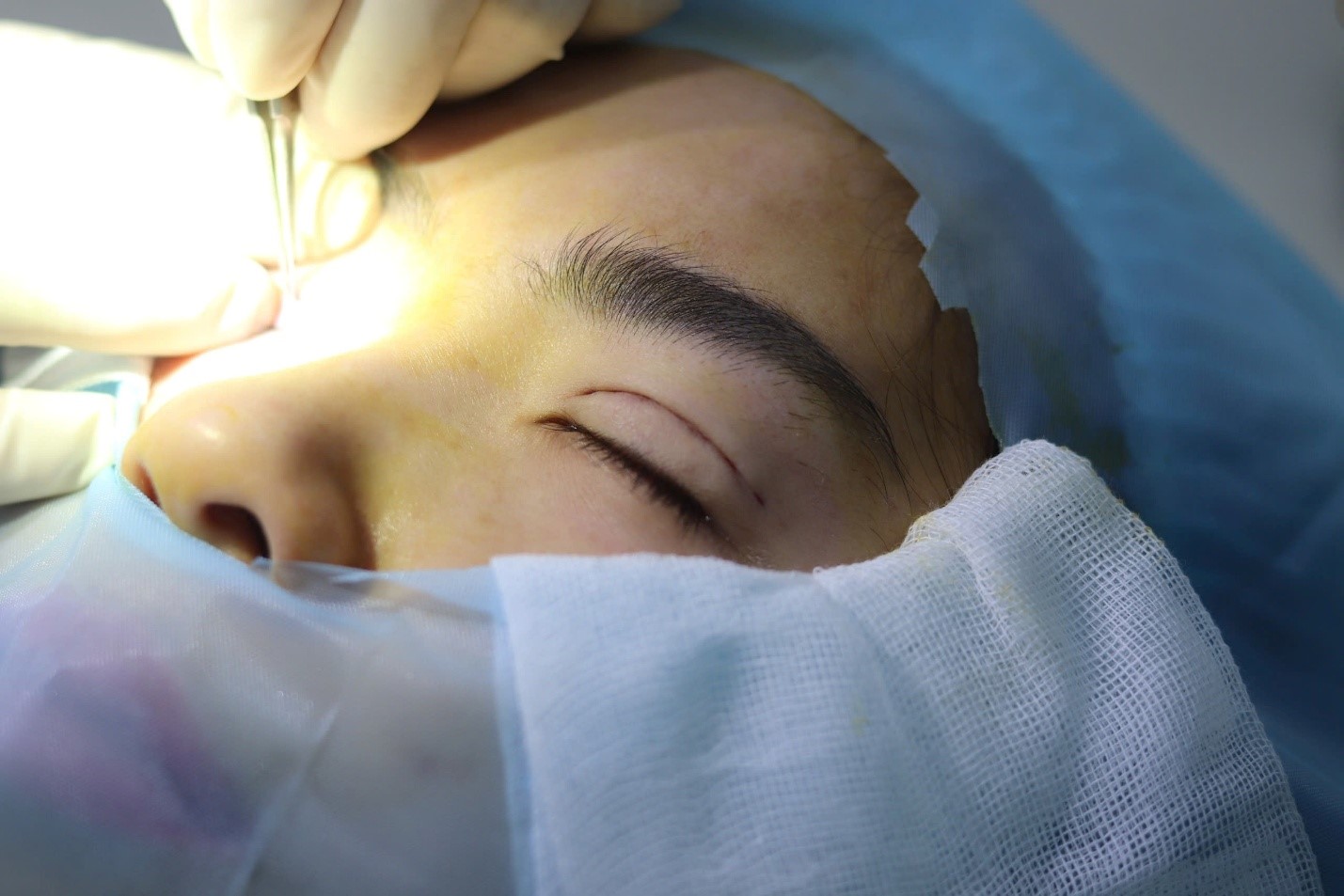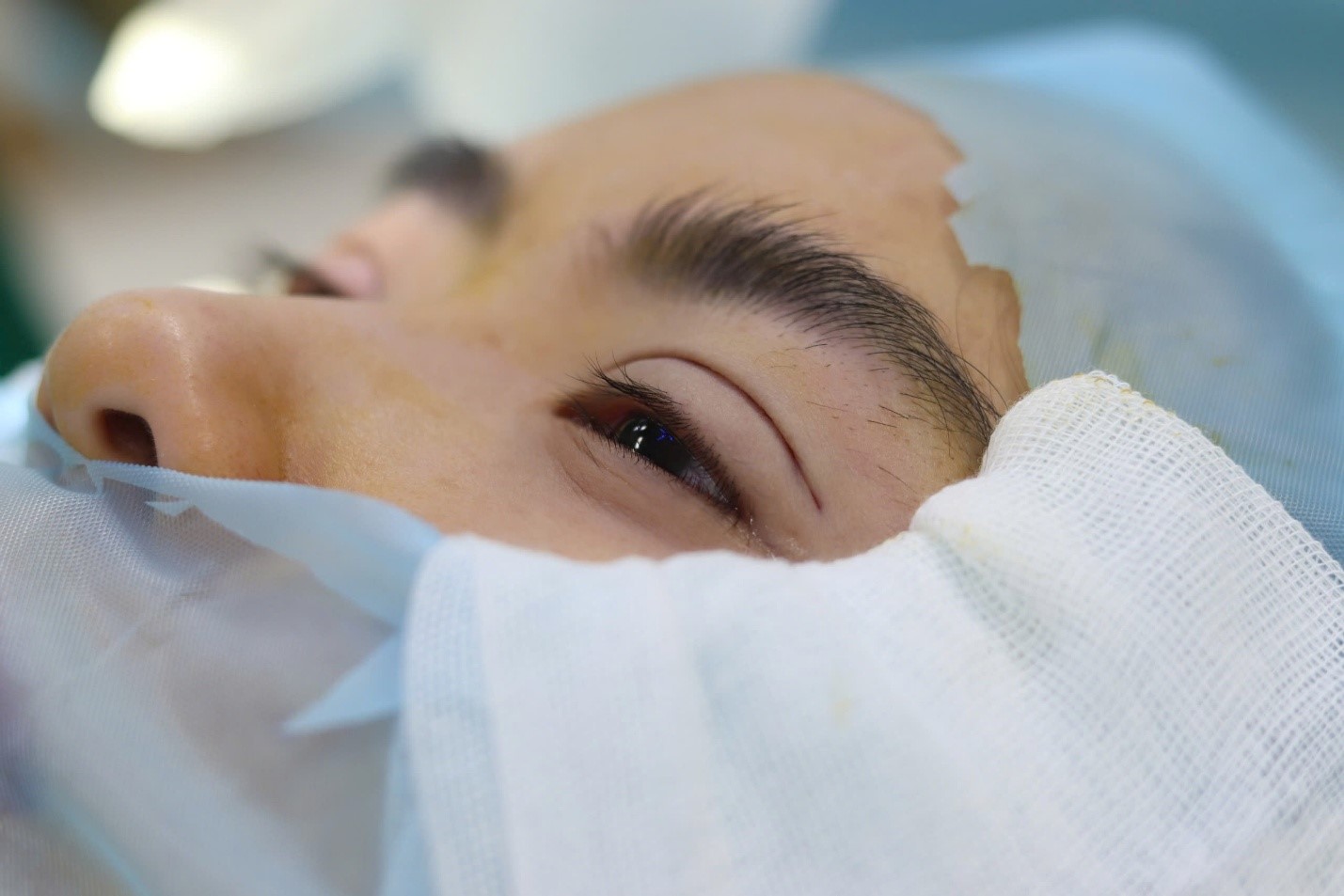Both double eyelid surgery (creating a crease in the eyelid) and blepharoplasty (eyelid surgery) aim to enhance the eyes' aesthetic appeal. Depending on the eye socket structure, surgeons choose the appropriate method to create a refreshed, captivating look. For younger individuals with thin eyelids, no excess skin or fat, minimal eyelid folds, and an intact eye structure, Dr. Ho Cao Vu, technical specialist at Dr. Cao Vu Cosmetic Center, suggests non-surgical double eyelid creation, which only affects the orbicularis oculi muscle and skin.
 |
A surgeon performs a double eyelid procedure. Photo: Dr. Ho Cao Vu |
A surgeon performs a double eyelid procedure. Photo: Dr. Ho Cao Vu
For those with specific eye socket structures, such as thick upper eyelid fat, thick upper eyelid skin, sagging skin due to age, loose fat pockets, weak levator palpebrae superioris muscles, previous unsuccessful eyelid surgery, scarring from previous cosmetic procedures, or small eye openings, Dr. Vu recommends "eyelid surgery to enhance eye expressiveness," which addresses the skin, fat, orbicularis oculi, and levator palpebrae superioris muscles. This solution creates a defined yet natural crease while correcting existing flaws.
Dr. Vu emphasizes the importance of thorough research before undergoing any eyelid procedures to avoid complications like staring eyes, lack of expression, dullness, weakened levator muscles, inflexible eyelids, or visible scarring, which can lead to insecurity and psychological distress. Here are some key considerations for eye surgery:
 |
Clients should choose reputable and high-quality facilities. Photo: Dr. Ho Cao Vu |
Clients should choose reputable and high-quality facilities. Photo: Dr. Ho Cao Vu
Choosing a reputable clinic: Many cosmetic centers advertise non-invasive, painless double eyelid procedures and blepharoplasty at affordable prices. Dr. Vu advises that the primary factor is choosing a facility licensed by the Department or Ministry of Health. Additionally, the surgical team should have valid medical licenses, at least 5-10 years of experience, and specialized eye surgery training.
Selecting the right surgical method: Some clients have unrealistic expectations or are unclear about their desired outcome, requesting procedures that don't suit their eye socket structure (including the orbital bone, orbicularis oculi, levator palpebrae superioris, eyelid cartilage, skin, and fat pockets), particularly neglecting the overall eye expressiveness. This can lead to unsatisfactory results.
According to Dr. Vu, most unsuccessful eye surgeries result from disregarding the crucial relationship between eyelid cartilage and the orbicularis oculi and levator palpebrae superioris muscles. These muscles are essential for blinking and contribute significantly to eye expressiveness. Therefore, the surgeon should tailor the technique to the individual's specific needs and eye characteristics.
 |
Double eyelid surgery creates a defined, natural crease that complements the face. Photo: Dr. Ho Cao Vu |
Double eyelid surgery creates a defined, natural crease that complements the face. Photo: Dr. Ho Cao Vu
Having corrected numerous unsuccessful eye surgeries, Dr. Vu explains that revision surgery requires careful consideration of various factors, including individual anatomy and any existing conditions. Eyes that have undergone multiple procedures require a specialist to assess the potential for improvement and determine the most suitable approach.
Successful eyelid surgery, whether double eyelid creation or blepharoplasty, should achieve eyelid size proportionate to the eye socket, a clear and natural crease, and vibrant, expressive eyes. The eyelid vector should also suit the individual's facial features.
"Eyelid surgery is a significant procedure impacting overall facial appearance and expression. Clients should thoroughly research before deciding to avoid irreversible complications," Dr. Vu emphasizes. "Crucially, procedures like double eyelid creation, blepharoplasty, brow lifts, and revision surgery should be performed by specialized surgeons to preserve and restore eye expressiveness."
For revision surgery, patients should wait 3 to 6 months for the previous surgery's internal injuries to heal completely. Dr. Vu cautions against rushing into revision surgery. In cases of emotional distress following unsuccessful surgery, psychological counseling is recommended before undergoing further procedures.
The Dan












